Control of Substances
Hazardous to Health (COSHH)
What is COSHH?
The answer is in the name. COSHH stands for ‘Control of Substances Hazardous to Health’. In the UK, COSHH regulations are aimed at ensuring businesses control substances that could cause injury to the health of their employees, such as chemicals. COSHH regulations protect workers and ensure working conditions are safe.
But how? Where do you start?
It’s the employer’s responsibility to identify what the health hazards are to employees if they work with, or around, or may come into contact with, hazardous chemicals and substances.
A robust risk assessment must be created, implemented and continually reviewed to ensure that your business is doing all it can to keep people safe.
By carrying out a COSHH assessment, you can identify what hazardous substances are being used, what control measures have been put in place, and whether the precautions currently taken are acceptable. Breaching COSHH regulations is a criminal offense so it’s vital to always have yours up to date.
What is a COSHH risk assessment and do I need one?
A COSHH risk assessment examines the hazards and risks from substances in the workplace. It asks questions about whether there is the potential for exposure to hazardous substances, the ways in which substances may be harmful to health and what tasks are being performed that may lead to hazardous exposure.
You need a COSHH assessment whenever you, or the company you work for, are using or creating a substance that is hazardous to health. These substances have the potential to cause harm if they are ingested, instilled, inhaled, or come into contact with or are absorbed through the skin.
What are my legal responsibilities as an employer?
According to the Control of Substances Hazardous to Health Regulations 2002, employers have a number of legal responsibilities aside from carrying out a risk assessment, including:
Exposure. Employers must control exposure to hazardous substances, for example through provision of personal protective equipment (PPE).
Control measures. Hazardous substances should have control measures implemented and maintained, for example through supervision and operating procedures.
Instruction. Employees must be provided with training, instruction and information.
Procedures. Employers must have procedures in place to deal with accidents and emergencies.
Supervision. Employees exposed to hazardous substances must be properly supervised to ensure their safety.
Limits. Make sure that the use of hazardous substances doesn’t go over the Workplace Exposure Limit.
How can The Health & Safety Dept help with my COSHH risk assessment?
COSHH regulations are complex and can be hard to navigate, especially if you haven’t dealt with them before. Our specialists can support and guide your business through the maze of COSHH, offering help and guidance every step of the way. We can offer sensible advice that is completely tailored to your business, enabling you to understand the regulations and create a COSHH policy that keeps your company and your employees 100% safe and compliant.
As well as assisting directly with COSHH assessments, our expert team can provide additional support and advise your business on the protective equipment necessary to ensure compliance. We can also help you to create emergency plans, which outline how to respond should an accident or emergency arise, including identifying potential accidents, advising on appropriate first aid care and evacuations strategies.
Safety is our business. We can support you in completing your COSHH risk assessment, and help you ensure you have all the information and assistance necessary to make completing them simple and stress-free.
COSHH FAQ
What is the difference between a COSHH assessment and a risk assessment?
A risk assessment identifies the hazardous properties of a substance and therefore highlights its potential to cause harm. A COSHH assessment examines the circumstances that a substance is being used in, and therefore highlights the actual risk that the substance could cause harm.
The COSHH assessment is designed to ensure that correct decisions are made about the control measures which should be taken to prevent or control substances that are hazardous to health. A more general risk assessment is the starting point of a COSHH assessment as it only provides information about the substance itself, and not advice about how to control it.
Who can carry out a COSHH assessment?
Whilst it is the employer’s responsibility to ensure a COSHH assessment is carried out, they may not actually write the assessment themselves. Large organisations often have an individual or a team or a team employed who is responsible for health and safety. Smaller companies may appoint a ‘competent person’ who can assist and advise on these matters. The person must have the necessary skills, knowledge and experience to carry out the assessment properly, as well as a good understanding of hazard and risk.
What are safety data sheets?
Safety data sheets are important documents that assist in the safe handling and use of chemicals and other hazardous substances. Data safety sheets provide key information on how to store and handle hazardous substances and identify the properties of a particular substance that may cause harm. They also detail emergency measures that would need to be taken in the event of an accident, for example first aid measures and fire-fighting measures. The data safety sheet forms the basis of a COSHH risk assessment, but is not the same thing.
How often should I review a COSHH assessment?
A COSHH assessment should be reviewed at least annually, or every time a relevant change is made within the work environment. For example, they should be reviewed if there are any reasons to believe the original assessment is no longer valid, such as reports are received from supervisors that there are defects in control systems, or new substances are introduced to the workplace or being produced by the workplace. If you have any reason to think your COSHH assessment may need to be updated, it’s vital to check.
Do I need to provide employees with a copy of the COSHH assessment?
All employees must have access to both the COSHH assessment and relevant data sheets for all substances that they work with or around that are hazardous to health.
It is necessary for employers to provide employees with comprehensive information about the risks, hazards and controls measures relating to hazardous substances. They must also provide training and instruction in order for the employee to be able to use the control measures.
How do I get information about the hazardous substances I am using?
All providers/ suppliers of substances are required to hold the relevant information to allow for COSHH assessments to be made. Employers should source this information from their suppliers for all substances they utilise at work.
More information about hazardous substances can be found on the UK Government Health and Safety Executive’s website.
What are hazard symbols?
Hazard pictograms alert us to the presence of hazardous substances. They help us identify chemicals that could cause harm to people and the environment. Examples are:
- Explosives: These are chemicals and preparations that may explode, due to being unstable or if exposed to fire, blast or projection.
- Flammable: Chemicals that may catch fire in contact with air, with brief exposure to ignition source or develop flammable gases due to exposure with water.
- Oxidising: Chemicals or preparations that react exothermically with other chemicals.
- Gas under pressure: Gas stored under pressure, such as in gas containers. May explode if heated or, if refrigerated gas, may cause cryogenic burns.
- Corrosive: Chemicals that may destroy living tissue on contact.
- Toxic. Chemicals that at very low levels can cause damage to health if swallowed, inhaled or come into contact with skin.
- Health hazard: Chemicals that may cause damage to health such as drowsiness, skin irritation or eye irritation, or is harmful if inhaled, swallowed or comes into contact with skin.
- Serious health hazard: Chemicals that can cause severe or long term health damage, for example organ damage, fertility damage, cancer, genetic defects, asthma, allergy or damage to an unborn child.
- Dangerous for the environment: Chemicals that may cause immediate or delayed damage to the environment, for example aquatic life.
Do you need advice regarding COSHH?

Related Services

Toolbox Talks

Policies & Procedures

Safe Systems at Work

Looking for expert health & Safety support?
We can help you focus on your business by taking care of all your health & safety needs.
Let us know how we can help or ask about our free initial H&S review.
Safety solutions that grow with you
Subscribe to our newsletter
Office Address: First Floor, 3 Brook Office Park, Emerson’s Green, Bristol, BS16 7FL | VAT Number: 900674738 | Registration Number: 06316590
Copyright © 2007 – 2019 The H&S Dept Ltd. H&S DEPT is a registered trademark belonging to The H&S Dept Limited.

